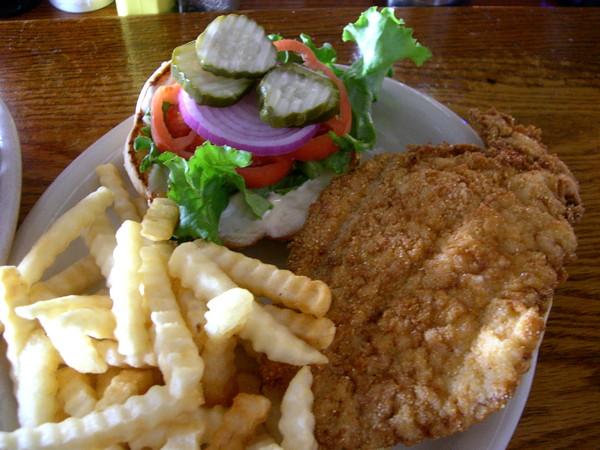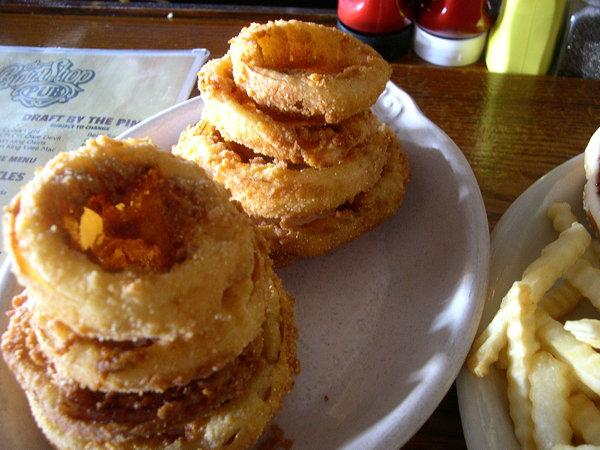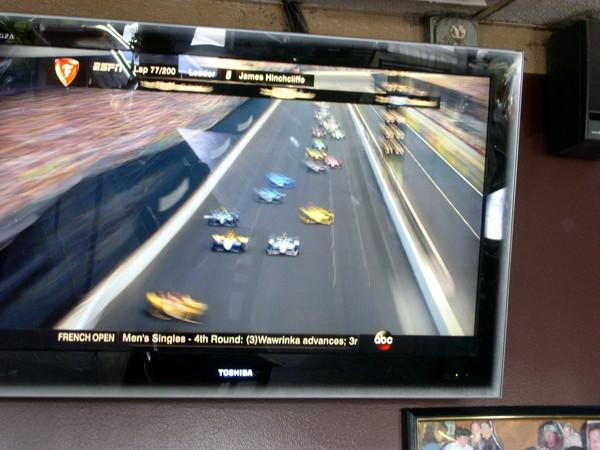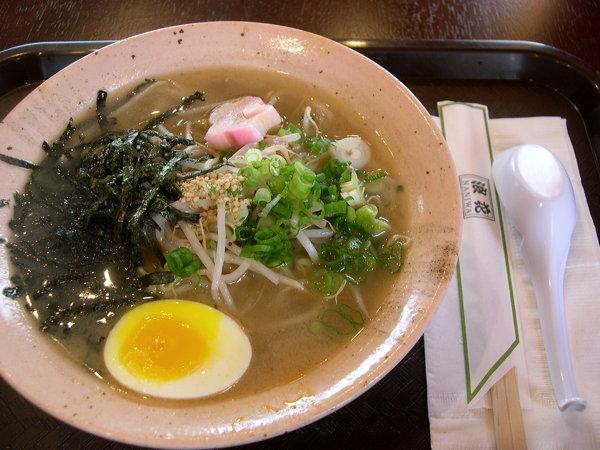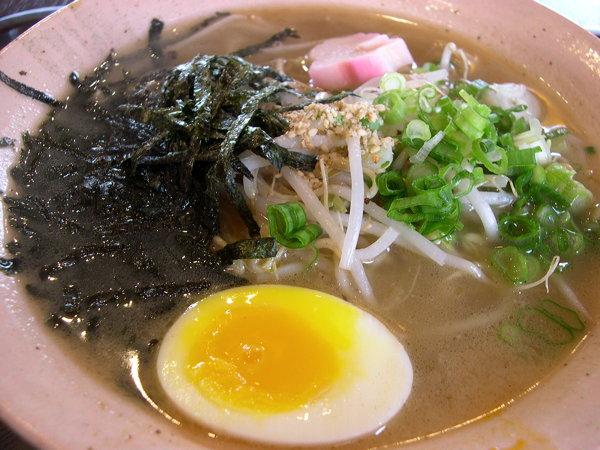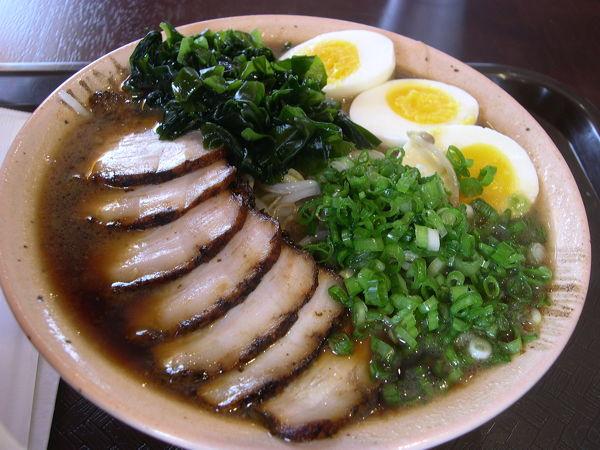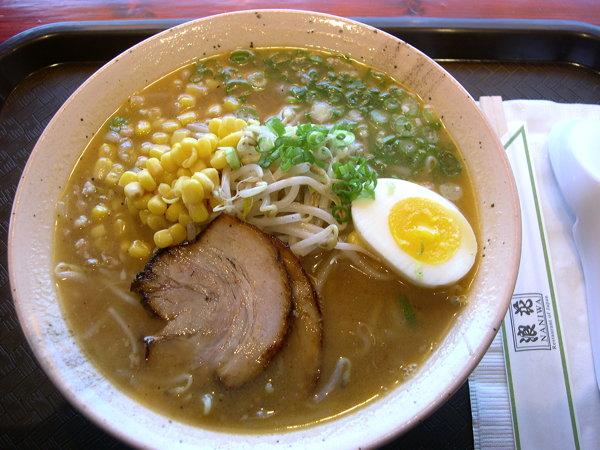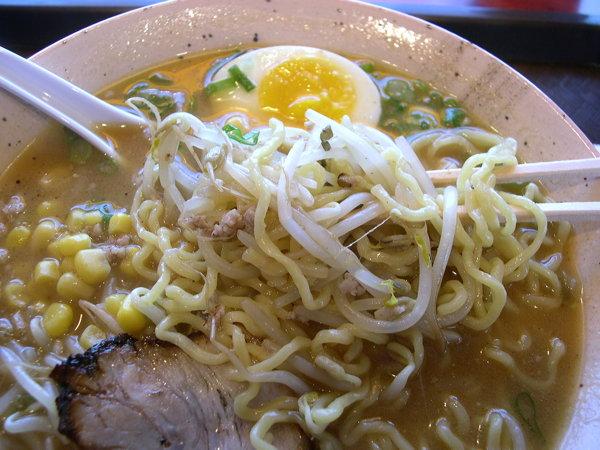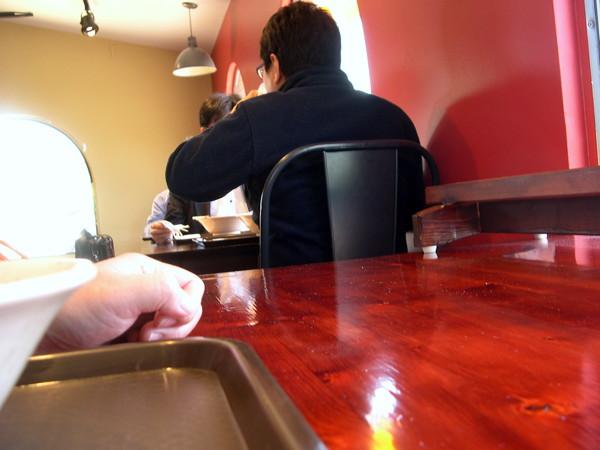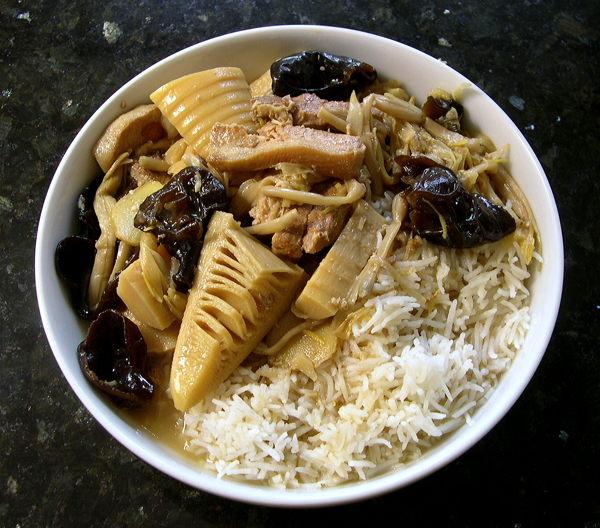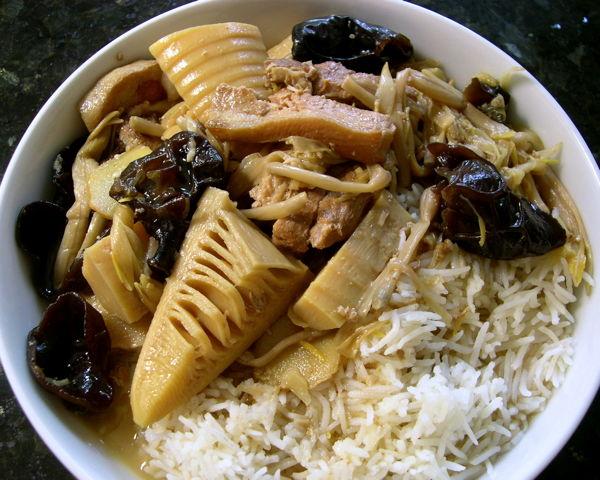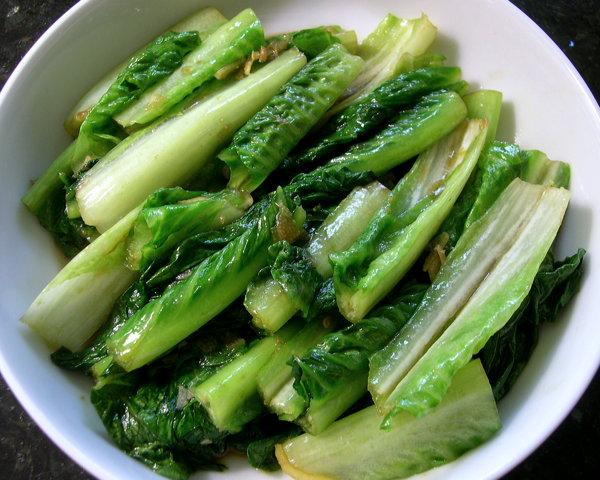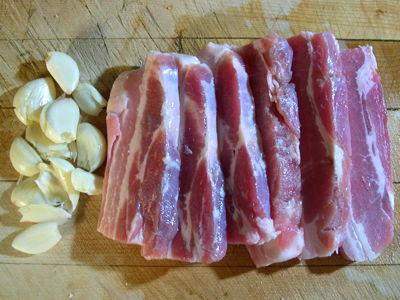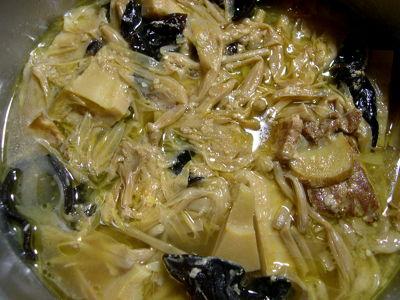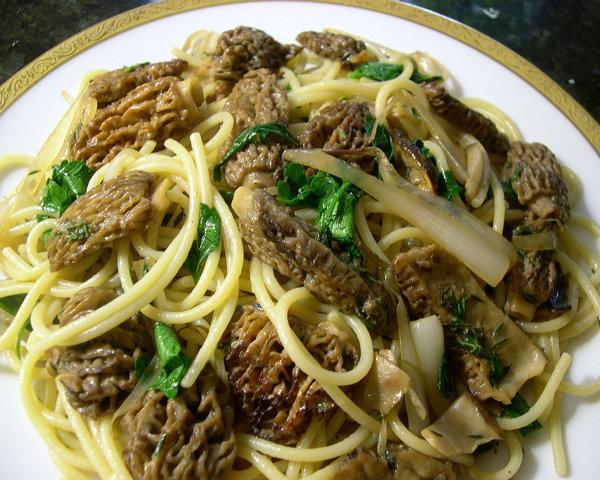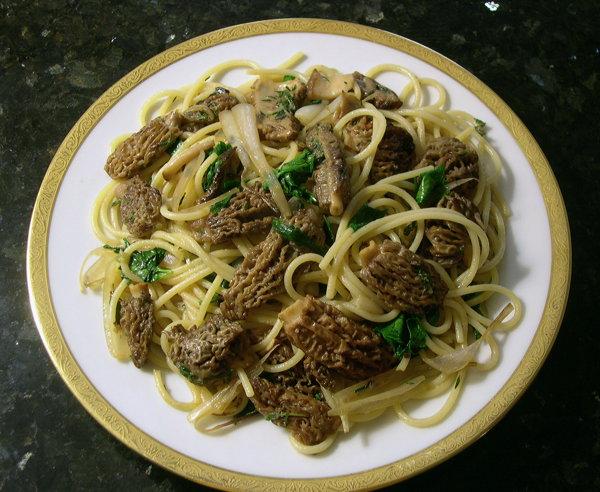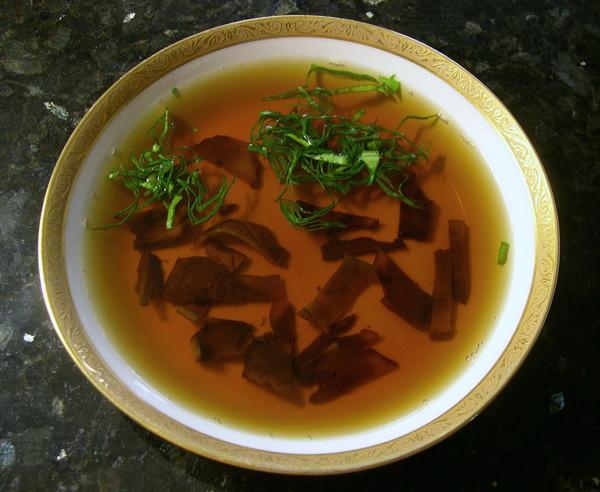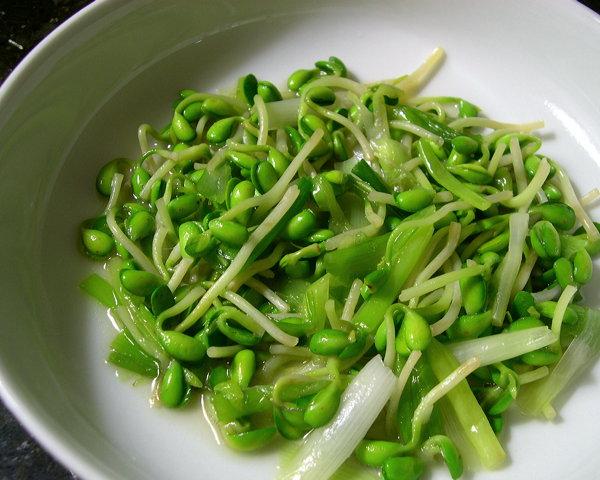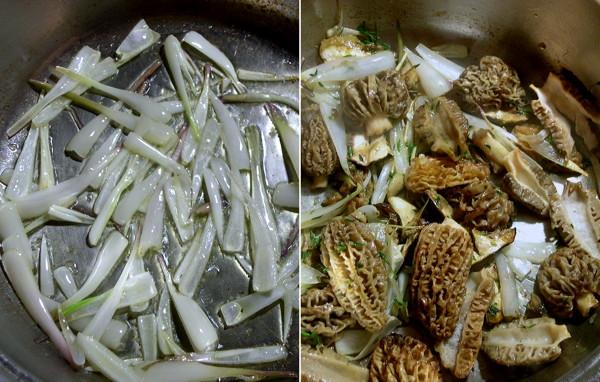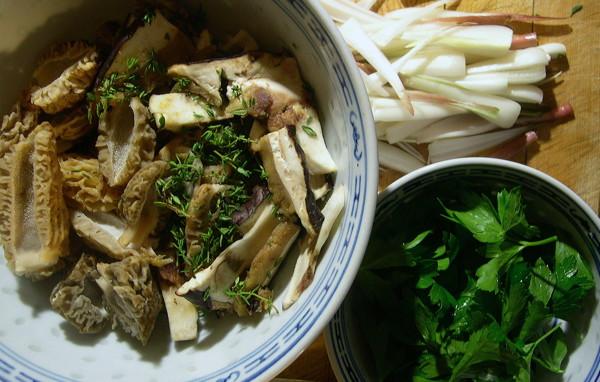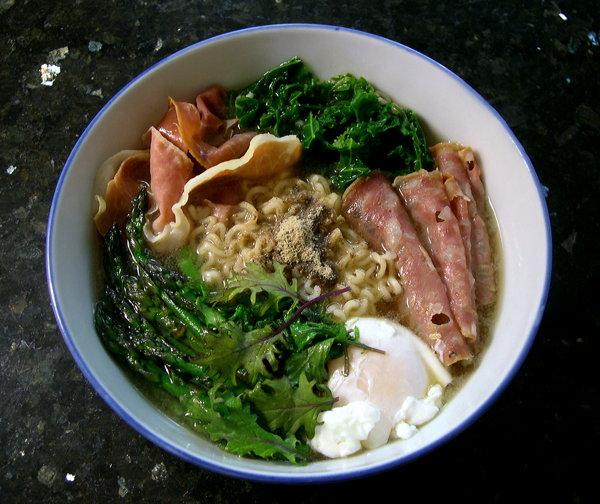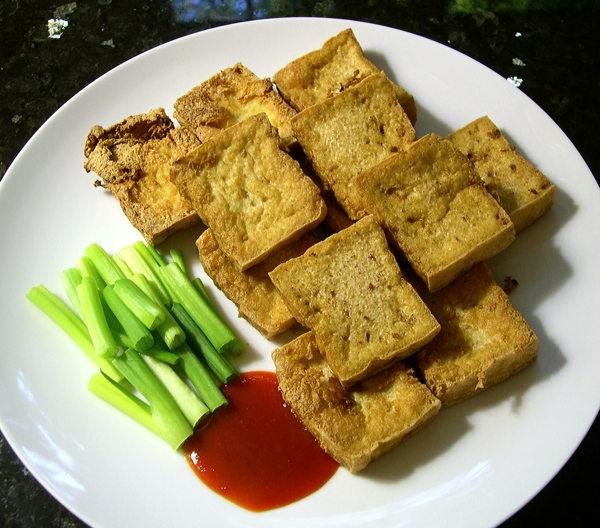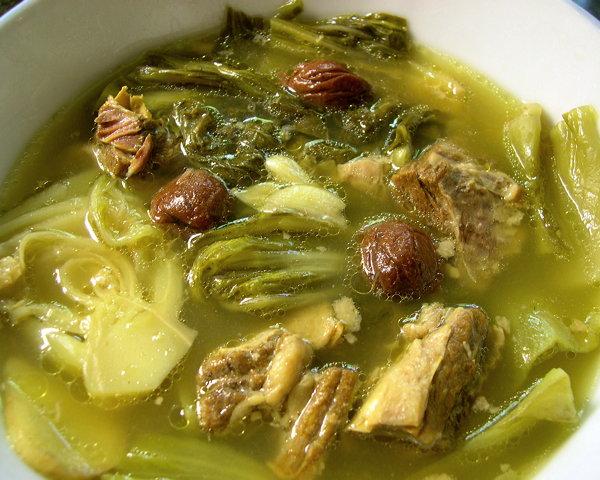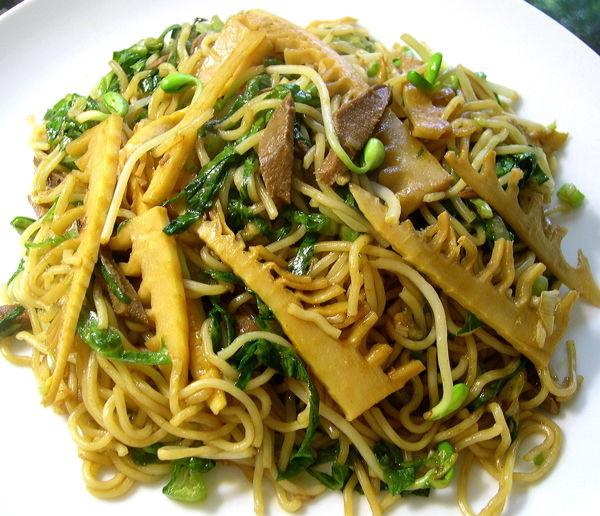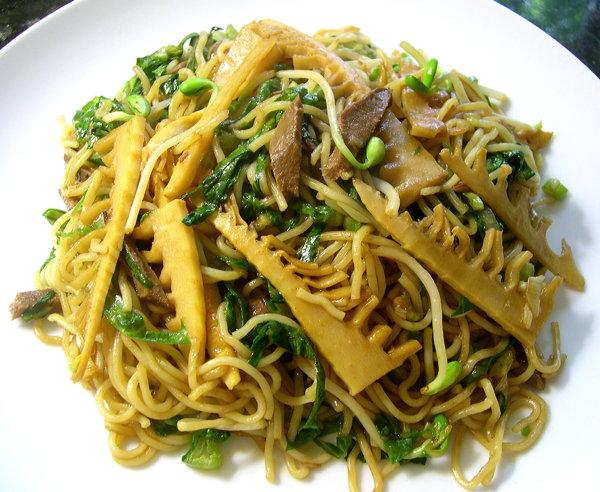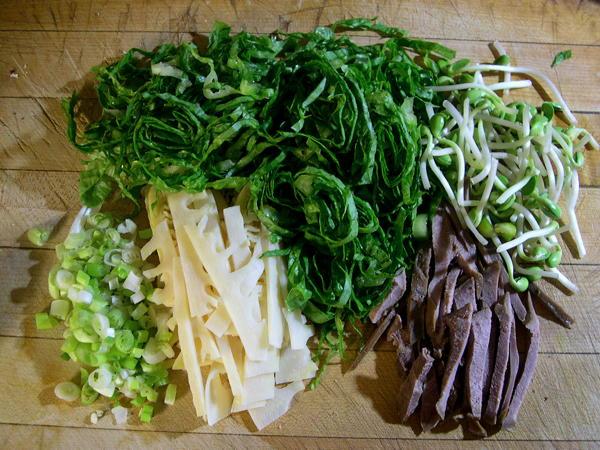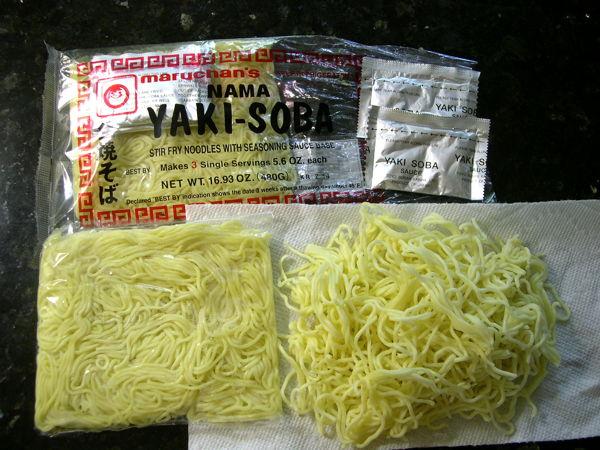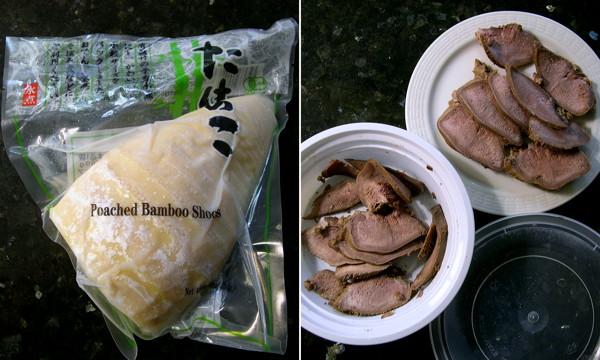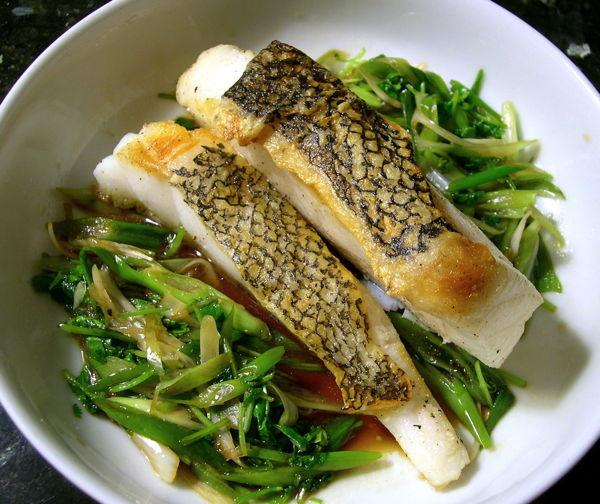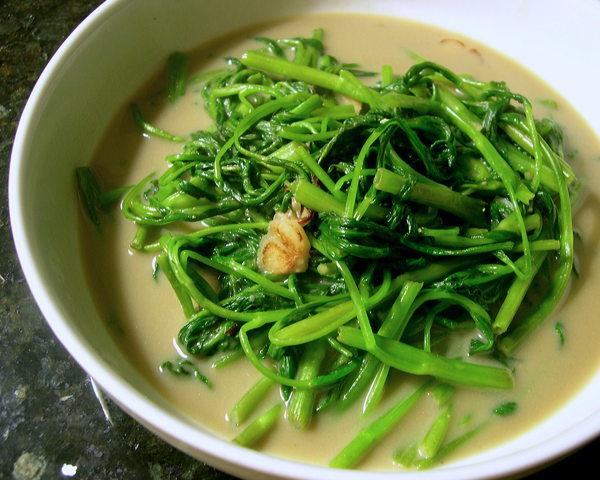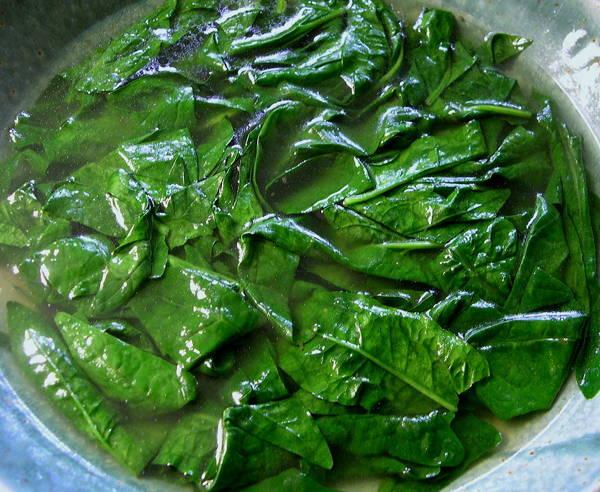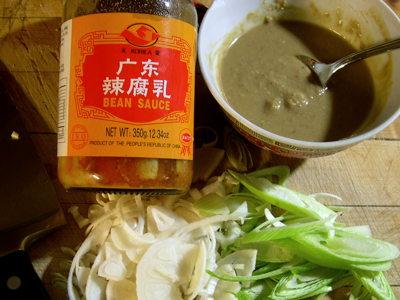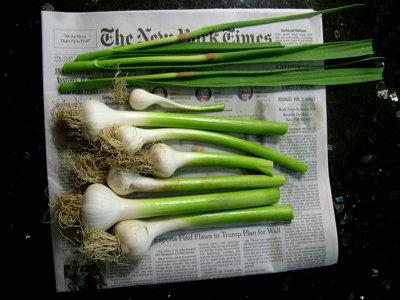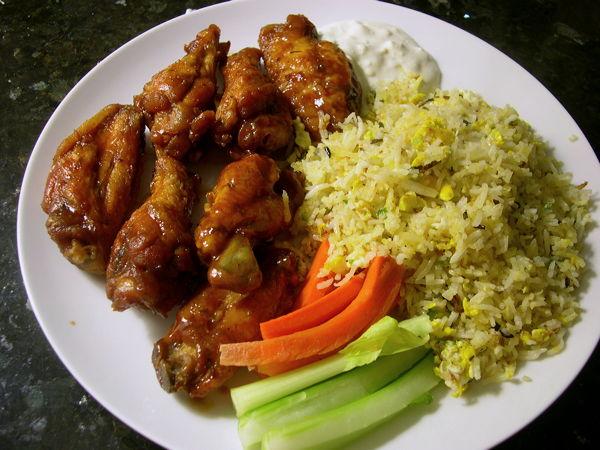-
Posts
3,810 -
Joined
-
Last visited
Content Type
Profiles
Forums
Store
Help Articles
Everything posted by huiray
-

Indianapolis Restaurant: Reviews & Recommendations
huiray replied to a topic in The Heartland: Dining
Well, I did. :-) Pawn Shop Pub Pork Tenderloin sandwich with everything plus fries (rather than chips). Nice. Happy. Onion rings. Ooh. Yum. The race (Indy 500) in progress on the screen close to me. Location on Googlemaps. This is one of the better places for a pork tenderloin in Indy. -
Here's an old thread on eG that contains commentary spreading over the three pages on Rustichella d'Abruzzo pastas; and the difference between De Cecco pasta in Europe (better) versus in the US (see this post, and downwards from there), plus other interesting stuff as well. (I just picked up a box of De Cecco and a package of R d'A from my larder and confirmed that De Cecco (in the US) is still "fortified pasta" while R d'A (in the US) continues to not be fortified.) ETA: I looked at a box of Cipriani pasta and this too is not fortified, although it uses fresh eggs (not egg powder) in making it.
-
Hmm. Have you actually had Cipriani or Rustichella pastas? I think these do very well just as pasta by themselves with some olive oil or some butter (maybe some cheese) as you yourself suggested. Garofalo isn't half-bad in this regard too. They taste quite fine to me, but that is me but perhaps not acceptable to you. Rough bronze dyes are involved in many of these pastas. I'm not sure what the scope is of your statement about the better pastas being extruded from rough bronze dyes - some of these brands that you disparage are extruded from such dyes; perhaps you might explain where their flour mixture (inter alia) or other specs do not meet your criteria of excellence?
-

Indianapolis Restaurant: Reviews & Recommendations
huiray replied to a topic in The Heartland: Dining
Heh. I *might* grab a tenderloin from the Pawn Shop Pub or KSR, and maybe watch some of the race, but we'll see... :-) But, yes, a good Indy Tenderloin Sandwich is a thing of beauty. :-) -
Too bad. So sad.
-

Indianapolis Restaurant: Reviews & Recommendations
huiray replied to a topic in The Heartland: Dining
Sapporo style ramen at Ramen Ray in Indianapolis. The husband-wife owners hail from Sapporo, Hokkaido; they had been working in the corporate world for some years but hankered for ramen like they grew up with. Finally they quit their jobs and went on to open up this place after some travails with the bureaucracy, what else. Miso ramen, on one day. Not bad, not bad at all. Good ramen, good taste. Shoyu ramen another day, with extra chashu & eggs. A bit on the overly salty side. The braised pork & eggs were fine. Shio ramen another day. I think I liked this the best of the three. Good complex broth (the miso was pretty good too, mind you), excellent ramen, saltiness was in check, especially relative to what I remembered about the shoyu ramen, ingredients in harmony (but no pork?) - would have liked another egg or two though. Next time. They also have a spicy miso ramen, and they aim to add more items to their menu. I didn't go for the Japanese style sweets. I had their slightly-curiously-flavored tea each time, though. (gratis) NOT CHEAP. The basic bowl is just over US$13. Unfortunately they don't sell their ramen (alone) at the present time. They bring it in fresh from Hokkaido and "age" it appropriately in-house. Their stocks and tare are all made daily (I believe) in-house. View of the inside one day. On another day. The outside. Location on Google maps. -
Hong Kong, I would think - as that is where the sophisticated high-tech printing houses are located and from where other publishers have derived their high-quality photo books? It would be really nice to have pics of the process of your book being printed and put together. Others have documented it, I think - why not ask if it can also be done in your case?
-
Would your publisher/agent/whoever arrange for the occasional photos from the printer of your book being put together at the various stages? That might also provide a "contextual story" to promote the book, as well as for general interest plus for your own satisfaction.
-
Pork belly slices braised w/ garlic, ginger, shiro miso, bamboo shoot, wood-ear fungus, lily buds. With white rice. Details here.
-
"Yau Mak Choy" (油麥菜), sort-of kind-of. (Stir-fried romaine-type lettuce) I used full-sized Western romaine outer + middle leaves instead of either the hearts or the small-sized variation of romaine-like lettuce used in this ubiquitous dish in SE Asia, or the Taiwan AA Choy used in some places. No less delicious. Stir-fried w/ garlic, quenched w/ a mixture of oyster sauce, sesame oil, Shaohsing wine, dash of fish sauce, ground white pepper, dash of double-fermented soy sauce. Pork belly slices braised w/ garlic, shiro miso & heavy-gelatin chicken stock; and bamboo shoot, wood-ear fungus, lily buds. Rice bran oil, lightly crushed garlic cloves, sliced ginger, pork belly slices (skin-on), shiro miso slurried w/ water, sauté; water, chicken stock, sliced pre-poached winter-type bamboo shoot, simmer; rehydrated trimmed wood-ear fungus, pre-soaked lily buds, simmer; w/ an overnight "stand" plus further simmering w/ a little more water added till done. Eaten w/ white rice. On the way there. It's no doubt a cultural and cuisine-specific thing, but I was salivating when looking at the stuff cooking along and smelling it... :-) :-D The pork belly slices (which were then cut into smaller pieces) were sliced from a much larger single slab (about 4 lbs?) of pork belly.
-
BTW, JNW, do you remember this? :-)
-
I haven't really been watching Bourdain's Parts Unknown (OK, not at all, after the initial episodes in season 1) but I think I'll try to remember to watch this one, and maybe pull up and watch some of the others in the series as well. http://www.eater.com/2016/5/23/11744788/obama-anthony-bourdain-dinner-hanoi-vietnam http://www.eater.com/2016/5/26/11785232/obama-bourdain-hanoi-dinner-vietnam https://li.st/l/b7c28923-6572-4803-9577-b714c8fc3d1c
-
Spring bolete consommé. Oregon spring boletes (including trimmings plus scraps), just enough water, several big scoops of reduced high gelatin chicken stock (from this), lots of parsley stems, Maldon salt, plus trimmed-off morel stems; simmer for a fair while. Filter twice. Clarify w/ egg whites, a final decant & filter.** Gently re-warm, plate/bowl w/ some of the now-darker-color bolete pieces (sliced) retrieved from the pot; and garnished w/ julienned ramp leaf. Blond morel, spring bolete & ramp pasta. Sliced ramp bulbs gently sautéed in Alziari EV olive oil, halved rinsed trimmed blond morels, fresh thyme leaves, bit of Maldon salt. Then wet just-cooked spaghetti [Rustichella d'Abruzzo], plucked parsley leaves, fold in, with pasta water splashed in as needed, fold together. Serve. Oh, some trimmed soy bean sprouts sautéed w/ scallions, simply salted, a little earlier. The pasta dish in process. The ingredients for the pasta dish. The blond morels, ramps, Oregon spring boletes came via Annabelle's Garden. A bit later, shelled & munched through a pile of salted pistachios. :-) ** lightly beaten white, stirred into cooled (RT) filtered soup, bring slowly towards simmer while stirring, stop stirring when curdled whites rise, let come to a simmer, shut off heat, cover, let stand. Then decanted and filtered through a pre-rinsed Melitta coffee filter #4.
-
Yes. (technically, the Chairman) JoNorvelleWalker, have you ever seen this? :-D In the past when I had Barilla pasta it was fine/OK, but nothing that special. Other brands (Italian) were as good or better. IIRC it cooked decently, but sometimes had what the Cantonese would call "sang kwat" (a hard, uncooked center) if I took it off just a little early, which is not to say other brands and styles did not do that also.
-
...or try this smaller set - just skip through the first few pages of the set, that should give one interesting threads to read. One does not have to go through the entire set. https://forums.egullet.org/search/?type=all&q=pasta+brand+type+differences
-
...if one has the SPACE (I don't) and the inclination to do it and clean up afterwards. :-) Dried pastas can be excellent. In some cases I certainly prefer them over fresh pasta - in proper traditional Pasta Carbonara, for example. Using fresh pasta tends to give broken pasta after being vigorously stirred; plus the taste/texture doesn't seem right with fresh pasta. Oh I certainly use fresh pasta too but there are makers of excellent fresh stuff in my area, at fairly reasonable prices, and it's easier for me to get fresh stuff from them. Even then I sometimes (often) find that I don't use up all the fresh stuff I buy (and therefore throw them out). I dislike freezing fresh pasta - they never "come back"/"cook" the exact same way as the fresh stuff when fresh, to my taste, and also fall apart more easily on cooking after being frozen (Yes, I would cook from frozen).
-
I DID pick out three from the answer set for you to look at - in that same post you followed the "search" link. Did you see them? Perhaps you might look at those three, assuming you did see them. Reload the webpage if any of the three topics show a system error message.
-
https://forums.egullet.org/search/?type=all&q=different+pastas I usually have De Cecco, Rustichella d'Abruzzo, Garofalo dry pastas always around, as well as Cipriani (dried egg pastas). Some other odd-and-end or interesting brands (including Middle Eastern and Greek) are also around.** The "everyday" one I use tends to be De Cecco (rather than Garofalo which can be a bit more al dente than I like); R d'A & Cipriani when I feel fancier or want higher quality, but it also depends on the dish, of course. I like their taste and texture, which are different in their own way. I used to cook Barilla pastas but stopped a few years ago and threw them out and never bought any more on principle. However, in recent years they seem to have corrected a particular situation - perhaps I might try them again. In any case I didn't think their pasta was *that* great but - for myself, speaking personally - was way better than stuff like Muellers or Creamette, which turned out much too soft for Italian-style dishes for my taste. ** I presume E/SE Asian "pastas" are NOT included in the discussion, although I think they should be.
-
A ramen bowl. The base was a pack of "Ibumie Penang Lad Mee Perisa Lada Pedas" (see here also). Additions & garnishes: Several dollops of stiff gelatin-dense chicken stock (heavily reduced from this batch), young green curly kale [Nading Farm], Jamón Serrano & Finocchiona [both from Goose the Market], couple of poached eggs [local; East Asia Market], local asparagus [Silverthorn Farm], baby Red Russian kale [Full Hand Farm].
-
A sort-of atsuage. Deep-fried firm tofu chunks, scallions, Lingham's Extra Hot Sauce. Soup. Water, bone-in beef short ribs, garlic, ginger, pickled mustard ("harm syun choy"; Sour Mustard in Brine [JHC brand]) pre-soaked & trimmed, wet sweet & sour Pickled Plums [Dragon brand] w/ some of the jelly, tamarind pulp cut from a pressed block [Dragonfly] slurried w/ water, salt. Simmer till done, seasoning adjusted. Yakisoba, the day's version chez huiray. For details see here in the ramen cook-off topic.
-
Yakisoba chez huiray today. Hot oil, part of the chopped scallions prepared, thinly-sliced poached washed & sliced winter bamboo shoot (see below, part of one used), half of a packet of yakisoba seasoning, soy bean sprouts ("big bean sprouts", 大豆芽菜) (a.k.a. yellow bean sprouts, 黃豆芽菜), stir/toss, remove & reserve. More oil in pan, water, nama yakisoba [Maruchan] (two packs), sliced braised beef tongue (see below), toss & stir on medium heat; the rest of the two-packs-worth of seasoning, stir some more; the reserved vegetables added back in plus chopped romaine lettuce, stir & fold in. Plate & serve. On the way there. Chopped scallions, sliced poached bamboo shoot, sliced romaine lettuce, sliced braised beef tongue, trimmed soy bean sprouts. The nama yakisoba [Maruchan] w/ the seasoning packets. A pack of the poached bamboo like the one used; the seasoned/spiced braised beef tongue already sliced. [both from East Asia Market].
-
How precise do you need those temperatures to be in practice? (and therefore throughout your recipes) Does it matter that the temperatures are exactly as specified? Not 1 degree more or 1 degree less? If exactly 104 ºF and exactly 223 ºF are required, is there a section somewhere on getting one's thermometers precisely calibrated to NIST standards, say? Elevation of the kitchen (above sea level) where the temperature specified is measured? What is the window of time available to execute the specified next step at those precise temperatures?
-
Spinach wilted into chicken broth. Kangkong stir-fried w/ young garlic & fermented chillied bean curd. Hot pan, hot oil, sliced young garlic, trimmed & washed kangkong, slurry of "Cantonese spicy fermented beancurd" (广东辣腐乳 (simplified) / 廣東辣腐乳 (traditional)) w/ water & a splash of Shaohsing wine. Pan-fried Patagonian Toothfish. Rinsed fish fillets patted dry, fried skin-side-down first; rice bran oil; salt & ground black pepper. Flipped over and fried, the smaller/thinner piece removed first, with the thicker piece fried longer while spooning hot oil over it as well. Oil decanted off, pan rinsed reheated w/ some of the oil, chopped scallions & coriander leaves tossed in followed by quenching w/ a mixture of double fermented soy sauce, water, Shaohsing wine, rock sugar (pre-dissolved in) and the heat shut off. The scallions & coriander plated w/ the fish, some of the warm sauce poured into the dish. Eaten w/ lots of rice. En route:
- 495 replies
-
- 12
-

-
Last night: Chicken wings w/ Caribbean Jerk dressing; from Keystone Sports Review (go to page 4), w/ the celery & carrots plus the very good in-house blue cheese "sauce" they make. Plus fried rice – from 2-day-old rice, a Black Silkie chicken egg, scallions, julienned ginger.
-
Curious about its provenance...? Oregon, Italy, elsewhere? For those who are interested: Oregon spring boletes are acknowledged nowadays as a separate species, Boletus rex-veris. The traditionally-thought-of porcini mushrooms are Boletus edulis.


